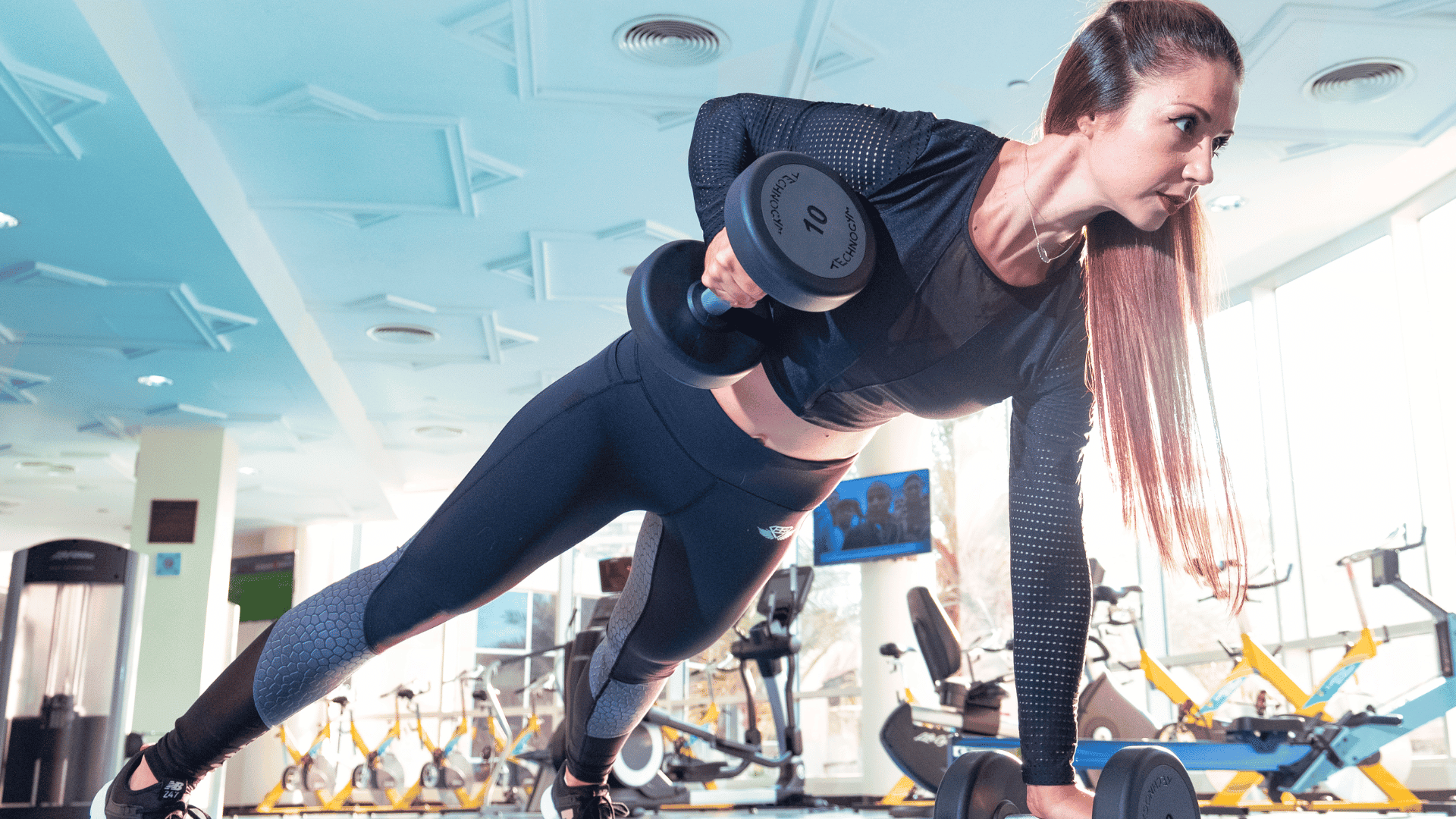Ever walk into a gym and have no idea where to begin?
There are machines everywhere. People doing routines you don’t recognize. And suddenly, your plan (if you had one) vanishes.
You see, working out in as a beginner in a beginner can feel really confusing. Not because you’re doing anything wrong, but because no one really tells you where to start.
This guide does.
You’ll get a clear set of simple, beginner-friendly exercises, a full workout you can actually follow, and tips that help you stop guessing and start moving with purpose.
What Beginners Actually Need From a Gym Workout
Starting a gym routine can feel like a lot. There’s pressure to do everything right—and fast. But the truth is, you don’t need to crush it on day one…
You just need to start with the basics.
Your first workouts should feel doable, not overwhelming. Focus on learning how to move well, not lifting heavy or doing fancy stuff. Things like squats, pushes, and pulls are simple moves that help you build strength and feel more in control of your body.
Also, you don’t need to be there for hours. A short, clear workout that hits your whole body is more than enough. What matters most right now is building a routine you can stick with.
So if you’re walking in feeling unsure, that’s okay. You’re not behind. You’re just getting started, and that’s a win.
Let’s look at a workout routine that actually makes sense for where you are right now.
The Best Beginner Gym Workout + How to Do It
When you’re new to the gym, the last thing you want is a long list of fancy moves or machines you’ve never used. What you really need is a small set of simple exercises that work. And a clear plan that tells you what to do and when to do it.
That’s what this section gives you.
You’ll find six beginner-friendly moves that cover your whole body. They’re easy to follow, safe to practice, and help you focus on good form instead of heavy weights.
Start With a Warm-Up (5 Minutes)
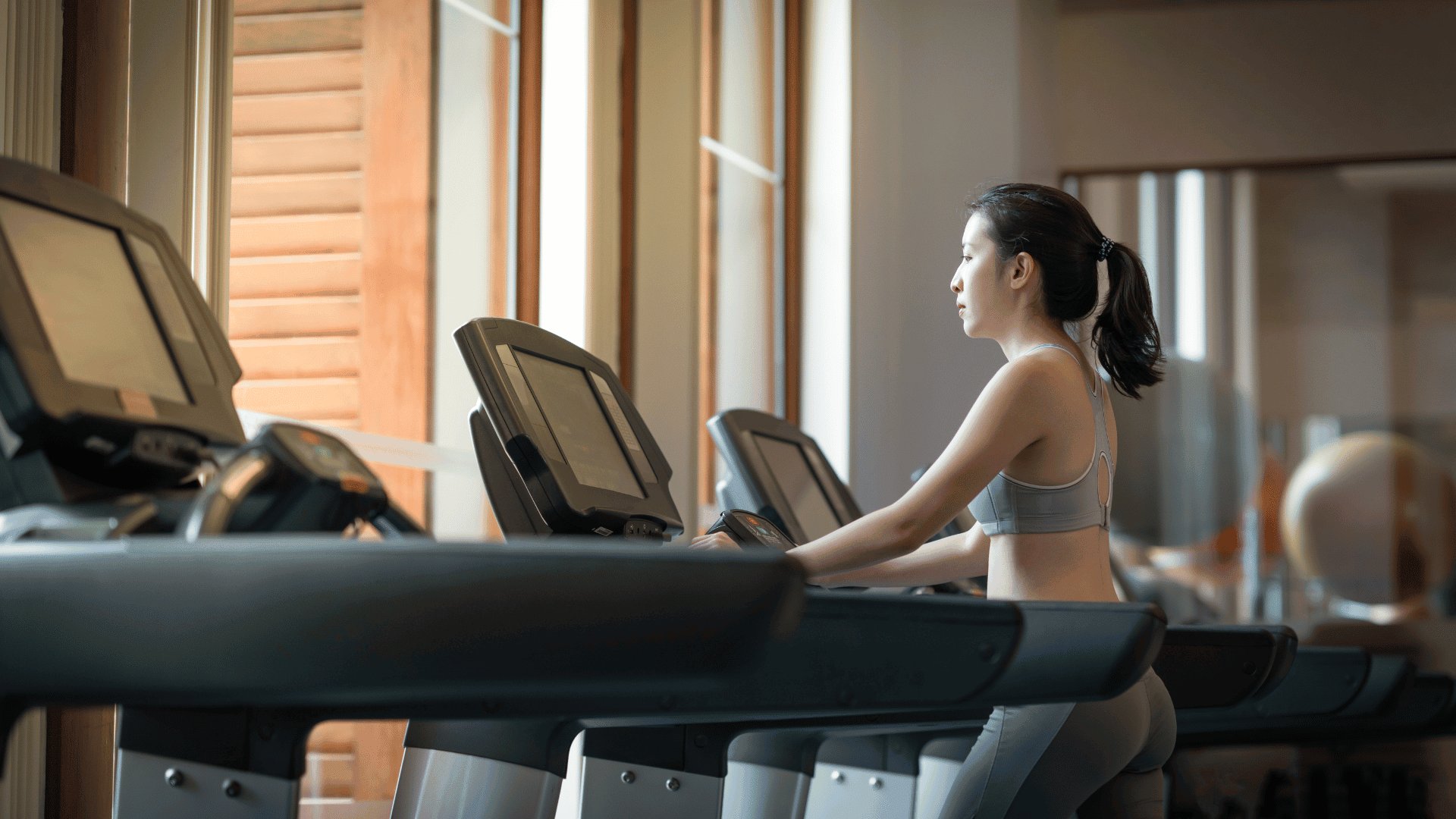
Before you jump into your workout, it’s important to get your body ready. A short warm-up helps you move better and lowers your risk of soreness or injury later on.
Start with a treadmill walk for 3 minutes. Keep the pace light and easy. This gets your blood flowing and helps you find your rhythm.
Next, do 1 minute of arm circles. Go forward for 30 seconds, then backward for 30 seconds. This opens up your shoulders and helps wake up your upper body.
That’s it. Simple and quick. Now your body’s ready to move.
Learn These 6 Basic Moves First
Before we jump into the full workout, it helps to get familiar with the main exercises.
These six moves are safe for beginners and work your whole body. You’ll do them in a loop later — but for now, let’s walk through each one step-by-step.
1. Bodyweight Squat

This one’s for your legs, butt, and core. It also teaches you how to stay balanced.
Stand with your feet a little wider than your hips. Pretend you’re zipping up tight jeans (that’s how you brace your core). Push your hips back like you’re about to sit in a chair.
Then bend your knees and slowly lower down. Keep your heels on the ground and your chest facing forward. Stand back up the same way.
(Feels weird at first? Totally normal.)
2. Incline Push-Up or Chest Press Machine
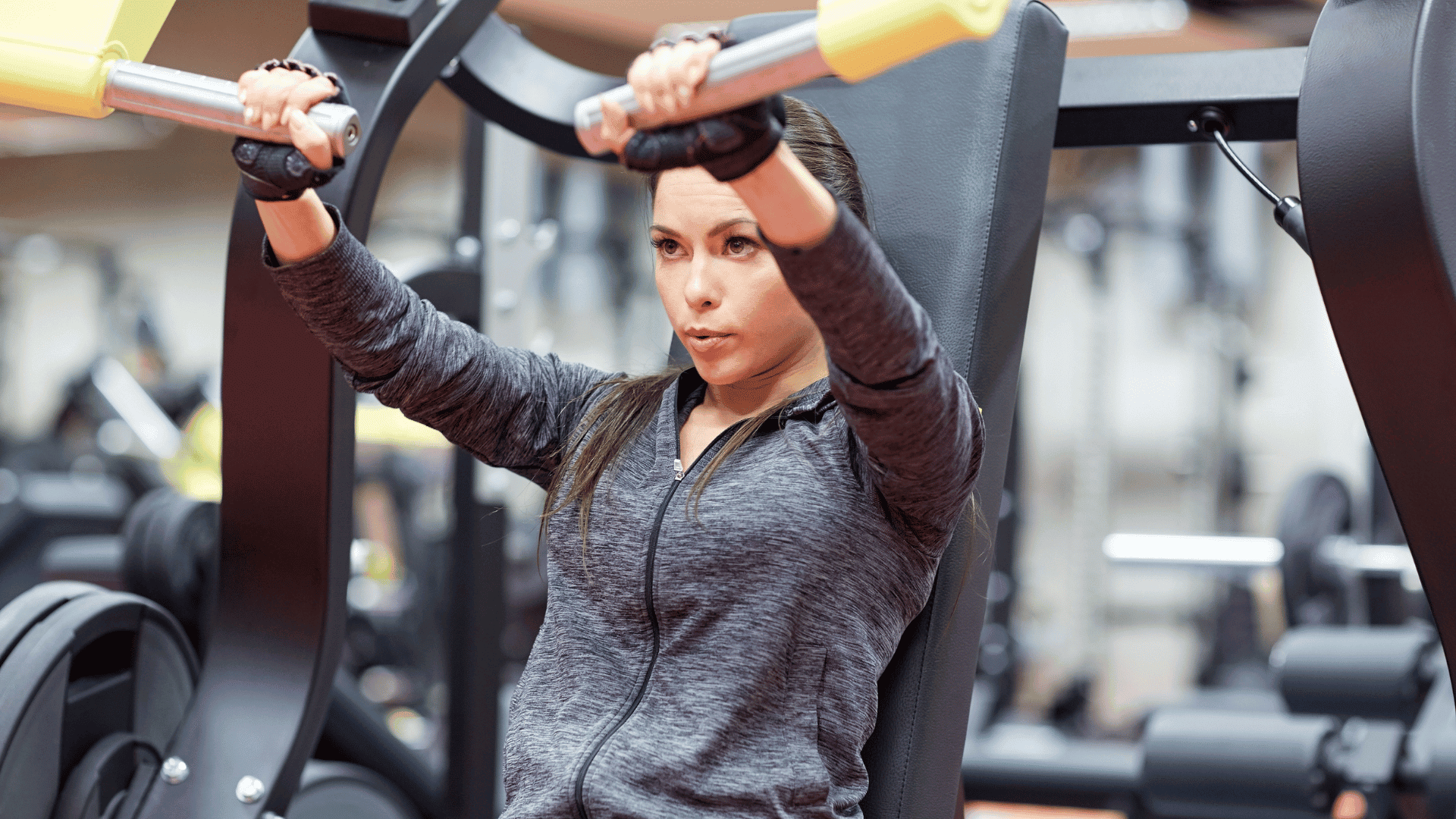
Both of these work your chest, shoulders, and arms.
If you’re doing incline push-ups, find a bench or sturdy bar. Keep your body in a straight line and lower your chest slowly, and don’t let your hips sag
Then, push back up.
If you’re using the chest press machine, sit back, hold the handles at chest level, and push forward. Come back slowly. You’re in control the whole time.
(Pick the one that feels more doable today.)
3. Seated Row Machine

This helps your back and posture. (super helpful if you sit at a desk a lot)
Sit tall, grab the handles, and pull them toward your chest. Keep your elbows close to your body. Squeeze your shoulder blades like you’re trying to hold a pencil between them. Then slowly return to the start.
(No need to rush. Slow is stronger.)
4. Dead Bug or Cable Core Pull
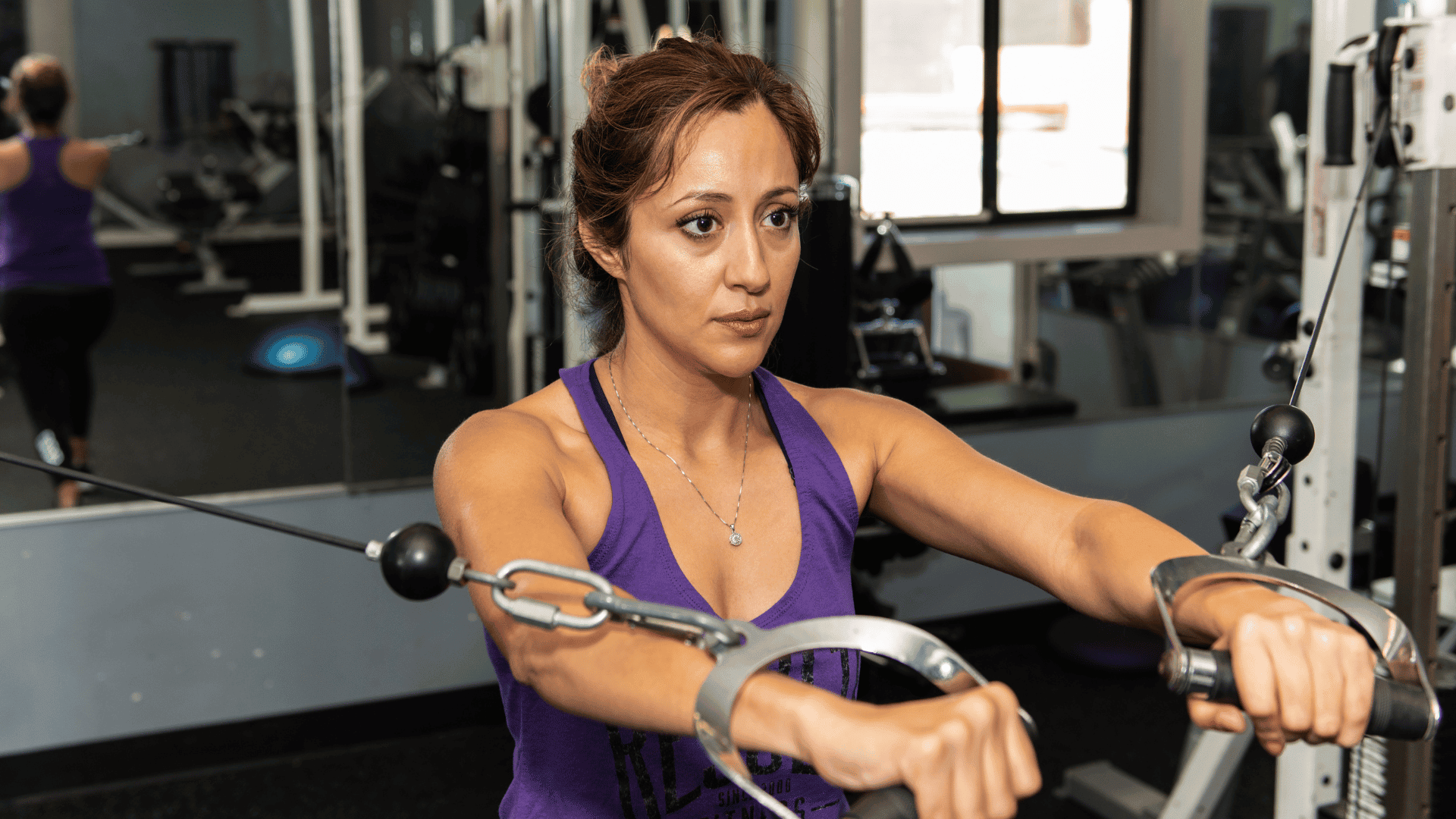
These work your deep core muscles. (the ones that protect your back and help with balance)
For dead bugs, lie on your back, knees up, arms reaching to the ceiling. Slowly lower one leg and the opposite arm at the same time. Keep your lower back flat against the floor. Switch sides.
For the cable pull, face the machine sideways, grab the handle with both hands, and press it straight out in front of you. Don’t twist. Just hold steady, then bring it back.
(This one looks easy but sneaks up on you.)
5. Leg Press Machine or Glute Bridge

Both options work your legs and glutes.
For the leg press, sit down and place your feet shoulder-width on the platform. Press out, then bend your knees to lower slowly. Don’t let your knees lock at the top.
For glute bridges, lie on your back, knees bent, feet flat. Push through your heels to lift your hips. Squeeze your glutes at the top, then lower with control.
(Pro tip: You should feel this in your butt, not your lower back.)
6. Treadmill Walk or Incline Walk
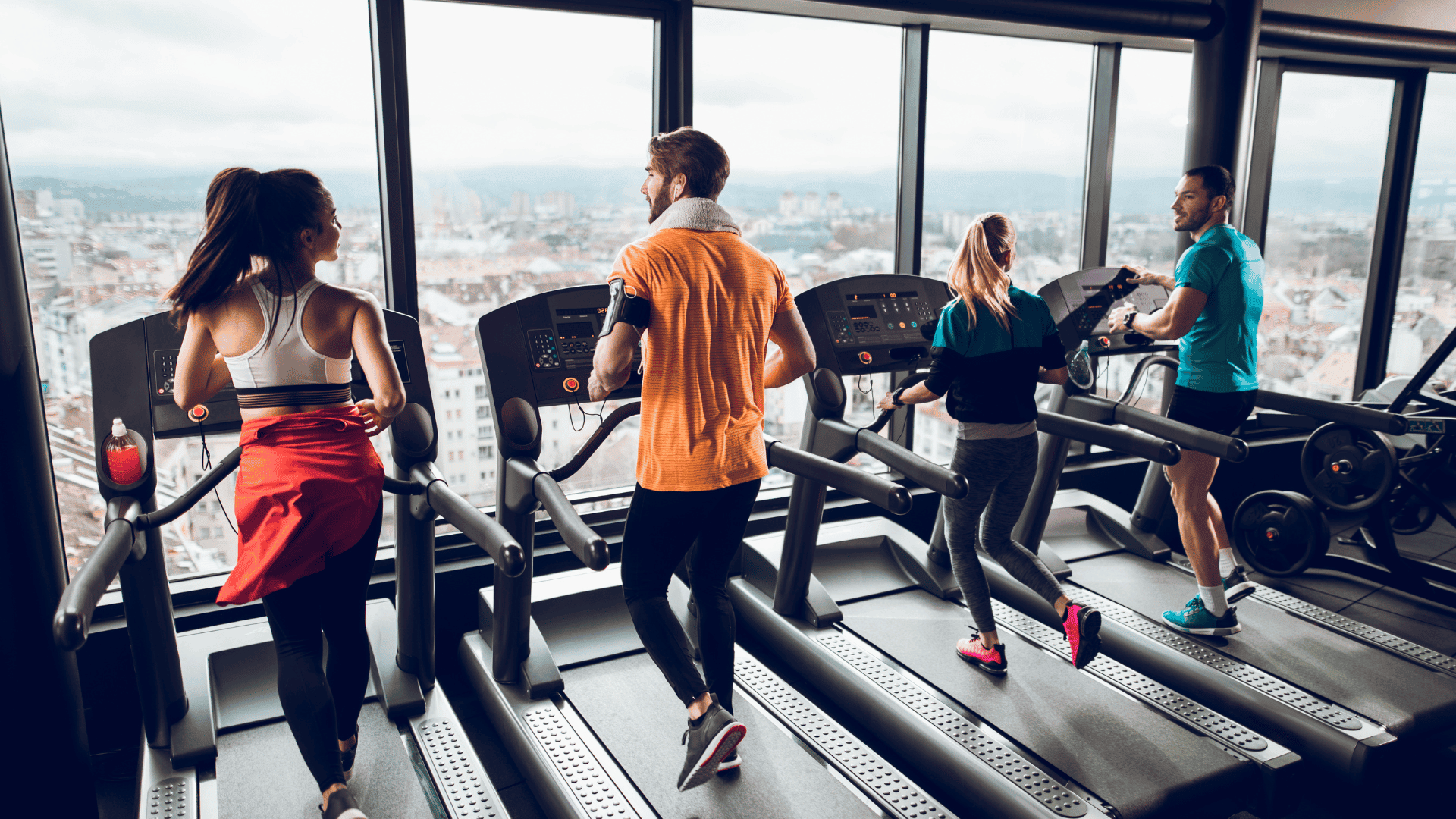
This helps with your heart health and builds endurance without overdoing it.
Start walking at a steady pace that feels strong but doable. Want more of a push? Add a slight incline for a bit of a hill.
Now Put It Together: Your Beginner Circuit
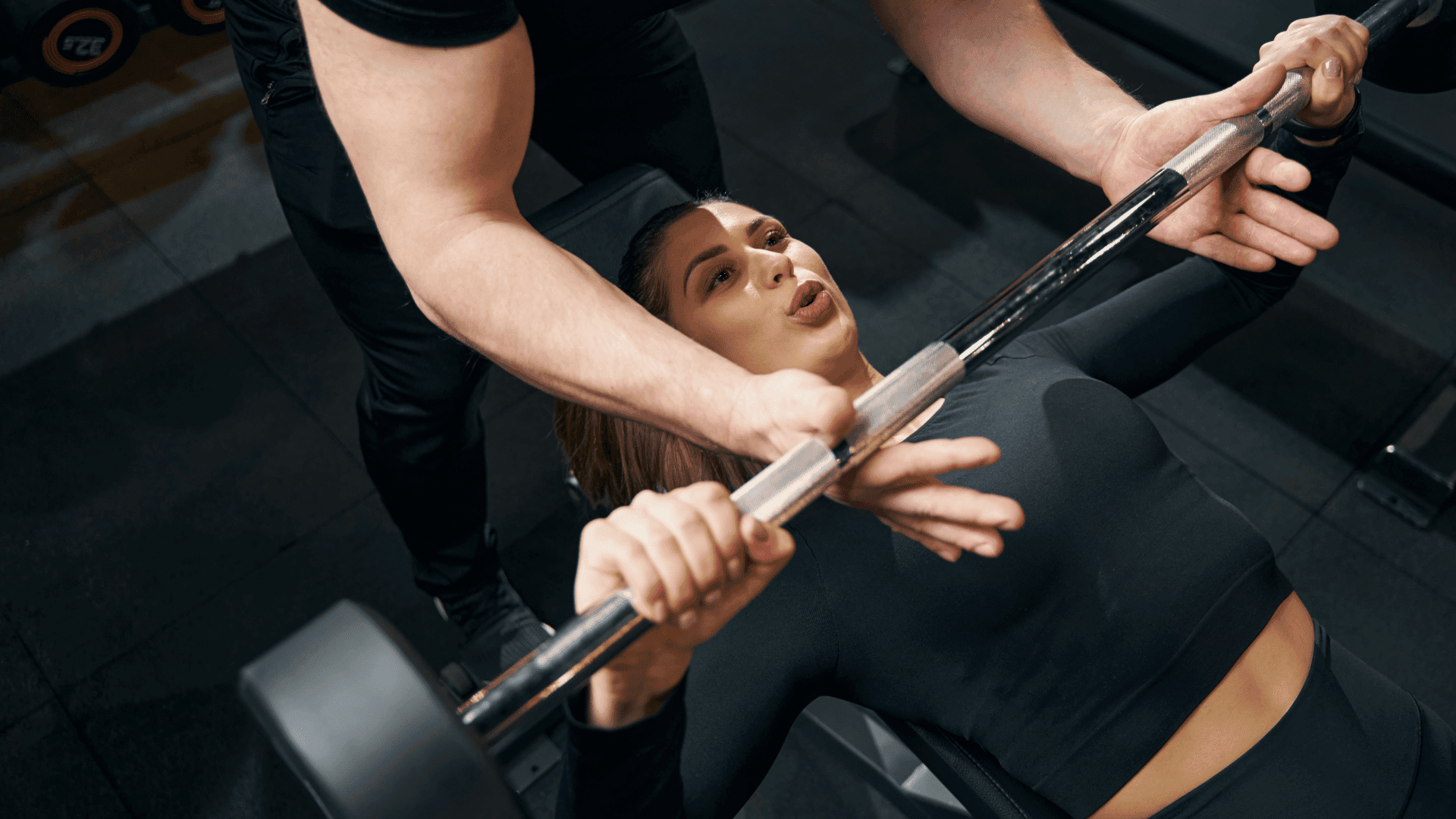
Let’s take the six moves you just learned and turn them into a full workout. This beginner circuit is simple, balanced, and easy to repeat every week. You’ll work your whole body without spending hours in the gym.
Step 1: Warm-Up (5 minutes)
Start with a 3-minute walk on the treadmill. Go at a pace that feels natural, just enough to get your blood flowing.
Then do 1 minute of arm circles. Go forward for 30 seconds, then backward for 30 more. This gets your shoulders loose and ready to move.
(Warming up helps you feel more steady and less stiff.)
Step 2: Main Circuit
Do each of the 6 moves you learned earlier, one after the other. You can go for 30 to 60 seconds per move, depending on how you feel.
After you finish all six, rest for 1 to 2 minutes. That’s one round.
Try to do 3 total rounds. But if you only make it through 2 this time, that’s okay. You’re here. You’re moving. That counts.
(Remember: steady is better than sweaty. It’s not a race.)
Step 3: Cool Down (2–3 minutes)
Slow things down with some light stretching. Focus on your hamstrings, chest, and shoulders, since those are the muscles you just used.
Take slow breaths. This helps your body shift from work mode back to normal. You’ll feel more relaxed and less sore later.
How to Know If You’re Doing It Right

When you’re just starting out, it can be hard to tell if you’re doing an exercise correctly or just going through the motions.
But here’s a good rule of thumb: your body should feel steady and in control, not shaky or forced.
Good form doesn’t mean you have to look like a pro. It just means your body feels balanced, your movement is smooth, and nothing hurts in a weird or sharp way.
You should feel the right muscles doing the work. Like in squats, your legs and glutes should be working, not your knees or lower back. If something feels off, slow down and check your stance. Little adjustments go a long way.
If you’re using machines, take a second to make sure everything’s set to your height. That means adjusting the seat, handles, or footrests so they fit you. Don’t worry about holding anyone up (promise, no one’s timing you).
And if you’re not sure how something works, just ask the gym staff. They’re there to help.
Start light. Whether it’s the weight you’re lifting or how many reps you’re doing, it’s better to begin easy and stay in control. You can always add more later once you’ve got the movement down.
One more thing…
Soreness is normal when you’re new. It might show up a day or two after your workout (hello, walking like a robot). But sharp pain, pinching, or anything that feels wrong? That’s a red flag.
If that happens, stop and check in with your body. It’s always better to pause and reset than to push through and risk injury.
(Learning how to listen to your body is part of the workout too.)
How to Feel Less Awkward at the Gym
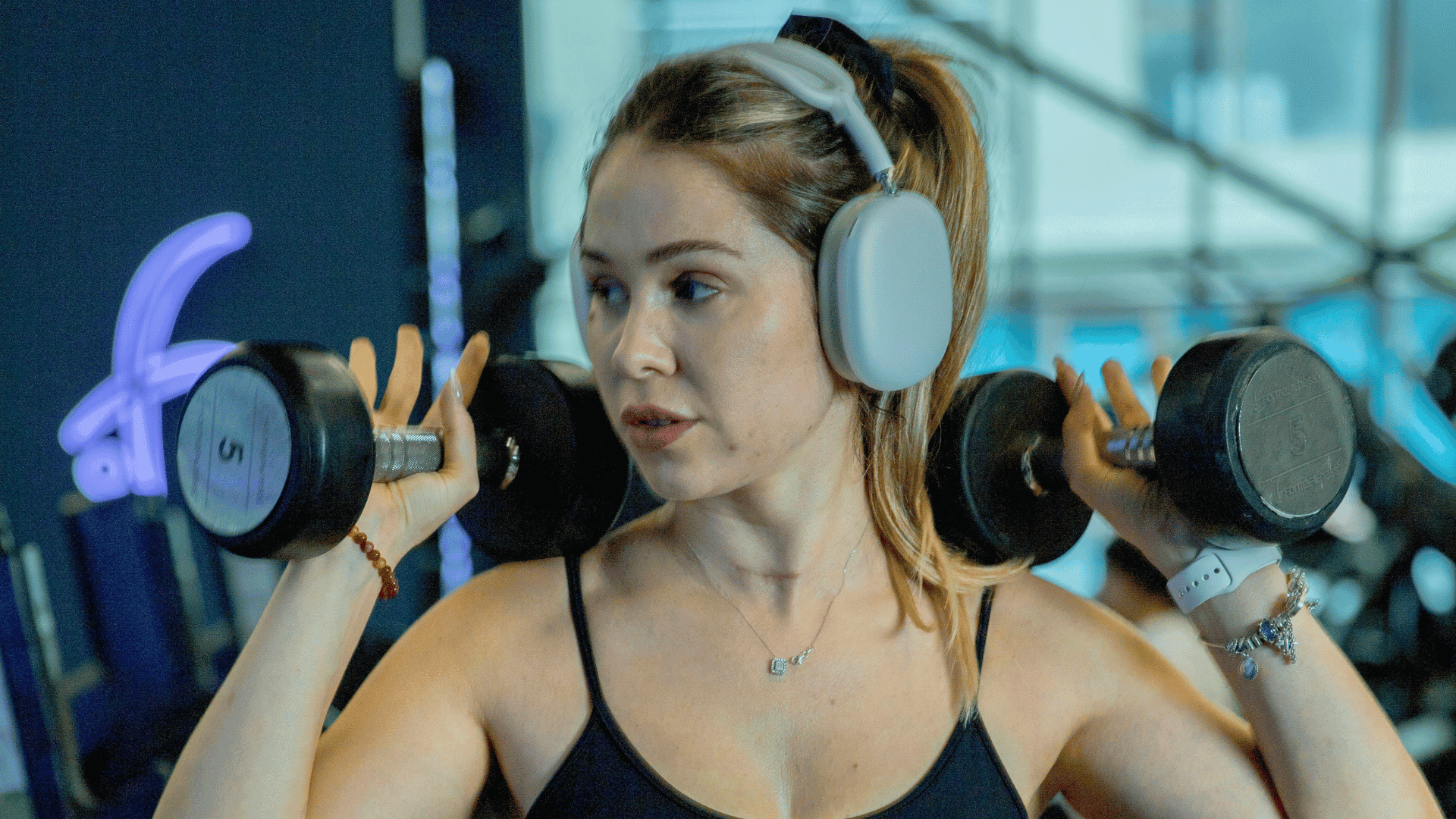
Feeling awkward at the gym is super common, especially when you’re just starting out. You might worry if people are staring, or wonder if you’re using a machine wrong. That kind of pressure can make it hard to focus or even make you want to leave.
But here’s the thing…
Almost everyone feels that way in the beginning. The more you go, the easier it gets. And with a few small tweaks, you can feel a lot more comfortable while you’re there.
Try going during less busy times. Late mornings, early afternoons, or weekends are usually quieter. When there are fewer people around, it’s easier to move at your own pace and take your time figuring things out.
Bring a small plan with you. You can use your notes app or write it down in a little notebook. Knowing what to do next helps you stay on track and avoid that “just wandering around” feeling.
Wear whatever makes you feel good. There’s no dress code. Some people go in leggings and crop tops. Others wear oversized t-shirts and sweats. What matters most is that you feel comfy and supported.
And if the gym still feels too loud or distracting, pop in your headphones. Listening to music or a podcast helps block out everything else and keeps you focused on your own thing. (Bonus: it’s also a nice way to set the vibe.)
One last reminder, nobody’s watching you like you think they are.
Most people are busy checking their form, counting reps, or trying to get through their own workout. You’re not being judged.
You’re learning. And that’s something to be proud of.
Progress Looks Different for Everyone
Some days, you’ll feel strong and ready to go. Other days, not so much.
And that’s totally normal.
Progress isn’t just about lifting heavier weights or doing more reps. Sometimes it means your body feels steadier. Or you finally remember your workout without checking your phone every five minutes.
Even showing up, especially when you didn’t feel like it, is a win.
That’s how habits are built.
The numbers don’t always tell the full story. You might be doing the same routine but with better form. Or maybe you’re not as sore as last time. Or you’re not out of breath halfway through.
All of that counts.
So don’t stress about being perfect. Just keep it simple. Give your body time to catch up, and let it learn at its own pace.
You’re not behind. You’re already doing the hardest part by starting.
Take the Guesswork Out of Your Gym Workouts
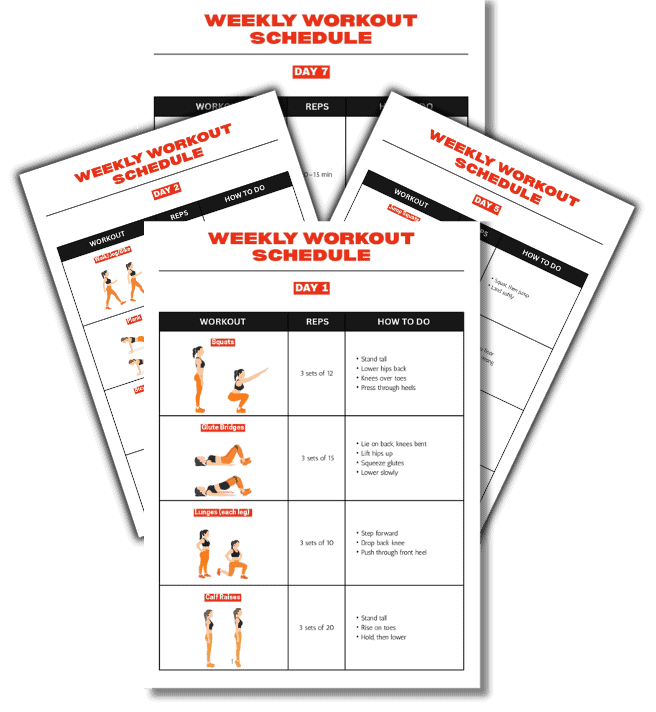
You’ve just learned 6 of the best moves for a gym workout for beginners to build confidence and strength.
But the real challenge comes when you walk into the gym and aren’t sure what to do next.
That’s why we created the FREE Weekly Workout Schedule. It gives you a clear, simple plan to follow so you never feel lost, and you’ll know exactly which moves to do on which day.
Frequently Asked Questions
1. What machines should I use if I’m new to working out?
Start with machines that guide your form and target big muscle groups. Good picks include the leg press, seated row, chest press, and cable machines for core work. These help you stay in control and reduce the risk of injury while you build strength. If a machine feels confusing, don’t hesitate to ask a staff member for a quick demo.
2. How many days a week should I go to the gym?
Two to three days a week is a great place to start. It gives your body time to adjust while helping you build a solid habit. As you get more comfortable, you can add a fourth day or simply make each session a bit longer. What matters most is staying consistent, not going hard every day.
3. Do I need to do cardio and weights on the same day?
Not at all. You can do them separately or together, depending on your schedule and goals. If you’re short on time, a short walk or incline treadmill session after weights works well. If you’re doing them on separate days, alternate between strength and cardio to give your body time to recover.
4. What should I eat before and after a beginner workout?
Before your workout, keep it light and simple. A banana, yogurt, or a slice of toast with peanut butter can give you energy without weighing you down. After your workout, aim for a mix of protein and carbs to help your body recover. Think: eggs and toast, a smoothie, or chicken and rice if it’s a full meal.
5. How long before I start seeing results?
It depends on your routine and your body, but most people start feeling a difference within 2–4 weeks things like better energy, less soreness, or more stability. Visible changes might take longer, usually around 6–8 weeks. But remember: feeling stronger and more confident in your movements is real progress, even before the mirror shows it.
